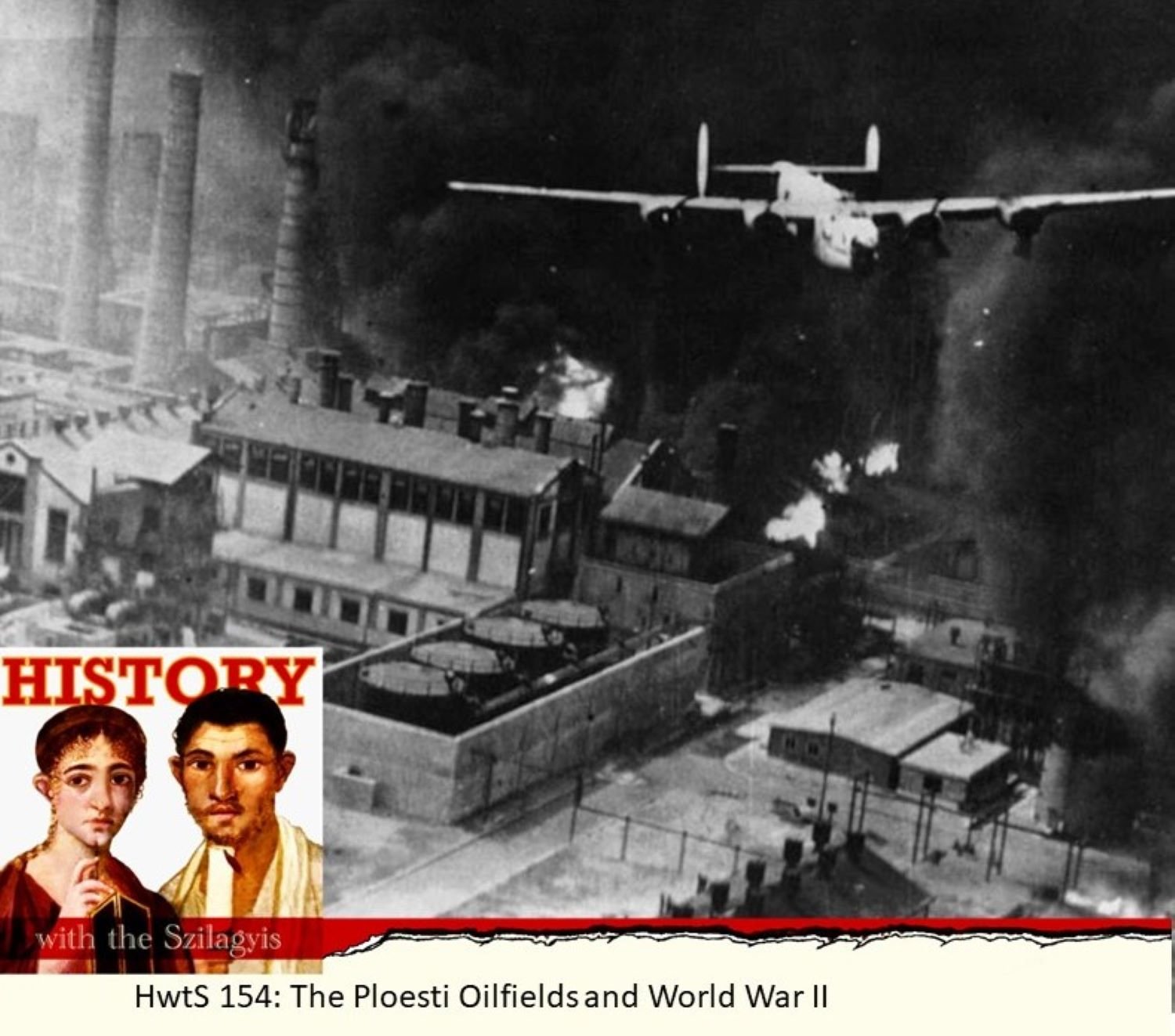The Ploesti Oilfields and World War II
— Jason
Listen here: https://www.spreaker.com/user/bqn1/hwts154
The modern world is dependent on the extraction, refinement, and distribution of oil. Because this precious fossil fuel is not evenly distributed throughout the world, control of this vital resource can be a war winning strategy. The industries and militaries that developed in the twentieth century are dependent on oil to function: cut off a country’s oil supply and you cripple their ability to conduct war.
At the outbreak of World War II, the British and Dutch controlled the oil resources in the Middle East and Dutch East Indies; the United States and the Soviet Union had their own extensive oilfields. Germany and Italy lacked any internal supplies of the oil and so were reliant on foreign sources; their only real choice of supplier turned out to be Romania.
At the height of its production, the Romanians accounted for a third of the fuel and lubricating oils the Axis Powers relied upon, much of it coming from the Ploesti oilfields. Hitler was insistent to keep the Romanians attached to Germany and gave weapons to them to bolster the alliance.
The Ploesti fields became the scene of some of the most vicious air battles of World War II. As Romanian oil became one of the only reliable sources of fuel for the Axis Powers, Germany poured money, materials, and defensive systems to protect them. The Russians and Americans launched two ineffectual attacks in 1941 and 1942. German fighter squadrons and anti-aircraft artillery batteries ringed the oilfields. Perhaps the most creative element of the defenses was the construction of rail lines that ran parallel to the attack approaches that Allied bombers would need to fly to attack Ploesti.
During 1943, the Allies planned a major push to strangle Germany’s war industries. They believed that a combination of bombing raids to cut off strategic resources, destroy industrial assets, and killing German workers would cripple the Third Reich’s war machine. Massive numbers of heavy, four-engine strategic bombers were being amassed both in England and in North Africa to conduct 24-hour raids against Axis targets.
By late summer 1943, a major raid, code named Operation Tidal Wave, had been organized with the hope of destroying the Romanian refineries. 178 B-24 bombers, with their aircrews and ground crews, were gathered in airfields around Benghazi, Libya. The planes needed to be modified with additional fuel tanks in their bomb-bays to make the 1200-mile flight to the target. It was hoped that this ambitious attack would cripple the Axis Powers.
In the early morning of 1 August 1943, 177 B-24s took off from the Libyan airfields and began the dangerous flight to Romania. Between takeoff and the flight over the Adriatic Sea, another fifteen aircraft were forced to abort due to mechanical issues. Radio silence was maintained to protect the remaining planes; while this was a sound strategy, the lack of communication between formations would prove detrimental as the raid unfolded.
The attackers consisted of five different formations that would strike the oilfields. The B-24s were to attack Ploesti from low level thus, potentially avoiding German fighters and anti-aircraft weapons. Another group of the Allied bombers flew deeper into Romania and attacked from a northern trajectory, once again to avoid stronger southern defenses. Each of the formations was to strike the oilfields at the same time and from slightly different directions. All these elements were designed to give the B-24s the best chance of success and survival for their crews.
As the B-24s powered toward Romania, the formations became separated, and some pulled ahead of their fellows: the synchronized timetable was thrown off. The first wave of bombers hit Ploesti ahead of all the following groups. Pinpoint accuracy for bombing targets was impossible during World War II and little actual damage was caused by the first B-24s. While the Germans and Romanians were shaken by these first attacks, they now had warning that other formations were approaching the Ploesti oilfields.
German and Romanian defenders scrambled their defenses from the surrounding airfields to intercept and disrupt the remaining B-24s. Trains that pulled specially converted railcars bristling with anti-aircraft guns were prepared to run along the most likely attack approaches.
When the next Allied formations flew over Ploesti, they were engulfed in flak bursts. Even at low-level, the B-24s were savaged by anti-aircraft fire and many were shot down. The lucky ones managed to drop their payloads on the oilfields and raced ahead of the explosions erupting all around them. The unlucky crews were either killed in the air or crashed into the surrounding countryside and were captured by the Axis. The overall damage to the facility was estimated by the Allies to be 40% of its production knocked offline.
Despite the Allied damage estimations, the resulting losses for their bombing groups were catastrophic. Only 88 of 162 B-24s that reached Ploesti made it back to Libya. Several bombers that had managed to survive the attack and subsequent Axis fighter pursuit either ditched in the Mediterranean Sea or landed in neutral Turkey and were interned for the rest of the war. The American units that conducted the raid lost 310 aircrew killed or missing and another 190 that were captured or interned.
